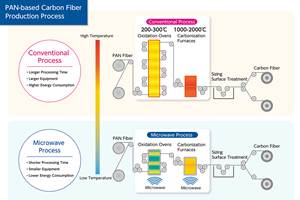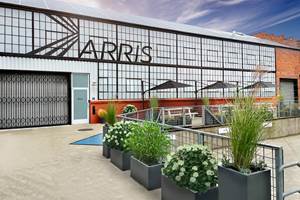F-35 makes first arrested landing aboard aircraft carrier
An F-35C Lightning II carrier varient Joint Strike Fighter conducted its first arrested landing aboard an aircraft carrier on Nov. 3 off the coast of San Diego, Calif., USA.
The U.S. Navy reports that on Nov. 3 an F-35C Lightning II carrier variant Joint Strike Fighter conducted its first arrested landing aboard an aircraft carrier off the coast of San Diego, Calif., USA.
Navy test pilot Cmdr. Tony Wilson landed F-35C test aircraft CF-03 at 12:18 p.m. aboard USS Nimitz's (CVN 68) flight deck. The arrested landing is part of initial at-sea Developmental Testing I (DT-I) for the F-35C, which commenced Nov. 3 and is expected to last two weeks.
DT-I is the first of three at-sea test phases planned for the composites-intensive F-35C. During DT-I, the test team from the F-35 Lightning II Pax River Integrated Test Force (ITF) has scheduled two F-35C test aircraft from Naval Air Station Patuxent River in Patuxent River, Md., USA, to perform a variety of operational maneuvers, including various catapult takeoffs and arrested landings. ITF flight test operations also encompass general maintenance and fit tests for the aircraft and support equipment, as well as simulated maintenance operations.
As with the initial testing of any new aircraft, the goal is to collect environmental data through added instrumentation to measure the F-35C's integration to flight deck operations and to further define the F-35C's operating parameters aboard the aircraft carrier.
The ITF test team will analyze data obtained during flight test operations, conduct a thorough assessment of how well the F-35C operated in the shipboard environment, and advise the Navy to make any adjustments necessary to ensure that the fifth-generation fighter is fully capable and ready to deploy to the fleet in 2018.
"Today is a landmark event in the development of the F-35C," said Wilson, a Navy test pilot with Air Test and Evaluation Squadron (VX) 23. "It is the culmination of many years of hard work by a talented team of thousands. I'm very excited to see America's newest aircraft on the flight deck of her oldest aircraft carrier, the USS Nimitz."
Commander, Naval Air Forces, Vice Adm. David H. Buss, was aboard Nimitz to witness the milestone event. "What a historic day today is for Naval Aviation. With the first traps of the F-35C Lightning II aboard an aircraft carrier, we begin the integration of the next generation of warfighting capability into our carrier-based air wings," said Buss. "This important milestone is yet another indicator of Naval Aviation's ongoing evolution to meet future threats and remain central to our future Navy and National Defense Strategy."
"Our F-35 integrated test team has done an amazing job preparing for today. This will be one landing out of thousands more that will happen over the next few decades," said Lt. Gen. Chris Bogdan, F-35 Program Executive Officer. "For months, we've been working with the Nimitz crew, Naval Air Forces, and our industry partners, Lockheed Martin and Pratt & Whitney, as well as their suppliers, to prepare and train for this event. We plan on learning a lot during this developmental test and will use that knowledge to make the naval variant of the F-35 an even more effective weapons platform."
By 2025, the Navy's aircraft carrier-based air wings will consist of a mix of F-35C, F/A-18E/F Super Hornets, EA-18G Growlers electronic attack aircraft, E-2D Hawkeye battle management and control aircraft, MH-60R/S helicopters and Carrier Onboard Delivery logistics aircraft.
Related Content
Microwave heating for more sustainable carbon fiber
Skeptics say it won’t work — Osaka-based Microwave Chemical Co. says it already has — and continues to advance its simulation-based technology to slash energy use and emissions in manufacturing.
Read MoreBio-based acrylonitrile for carbon fiber manufacture
The quest for a sustainable source of acrylonitrile for carbon fiber manufacture has made the leap from the lab to the market.
Read MoreCirculinQ: Glass fiber, recycled plastic turn paving into climate solutions
Durable, modular paving system from recycled composite filters, collects, infiltrates stormwater to reduce flooding and recharge local aquifers.
Read MorePlant tour: Arris Composites, Berkeley, Calif., U.S.
The creator of Additive Molding is leveraging automation and thermoplastics to provide high-volume, high-quality, sustainable composites manufacturing services.
Read MoreRead Next
All-recycled, needle-punched nonwoven CFRP slashes carbon footprint of Formula 2 seat
Dallara and Tenowo collaborate to produce a race-ready Formula 2 seat using recycled carbon fiber, reducing CO2 emissions by 97.5% compared to virgin materials.
Read More“Structured air” TPS safeguards composite structures
Powered by an 85% air/15% pure polyimide aerogel, Blueshift’s novel material system protects structures during transient thermal events from -200°C to beyond 2400°C for rockets, battery boxes and more.
Read MoreDeveloping bonded composite repair for ships, offshore units
Bureau Veritas and industry partners issue guidelines and pave the way for certification via StrengthBond Offshore project.
Read More













.jpg;maxWidth=300;quality=90)







